Some of the links in this post may be affiliate links.
With the multitude of Hoya species out there, it can be difficult to sift through and determine which ones are the easiest to grow. As a whole, many Hoyas are easy to grow indoors, but certain ones are definitely easier than others. Here are my picks for the best Hoyas for beginners.
There are certainly more than this, but I grow all of the varieties below, and more, so I can attest to their ease of care!
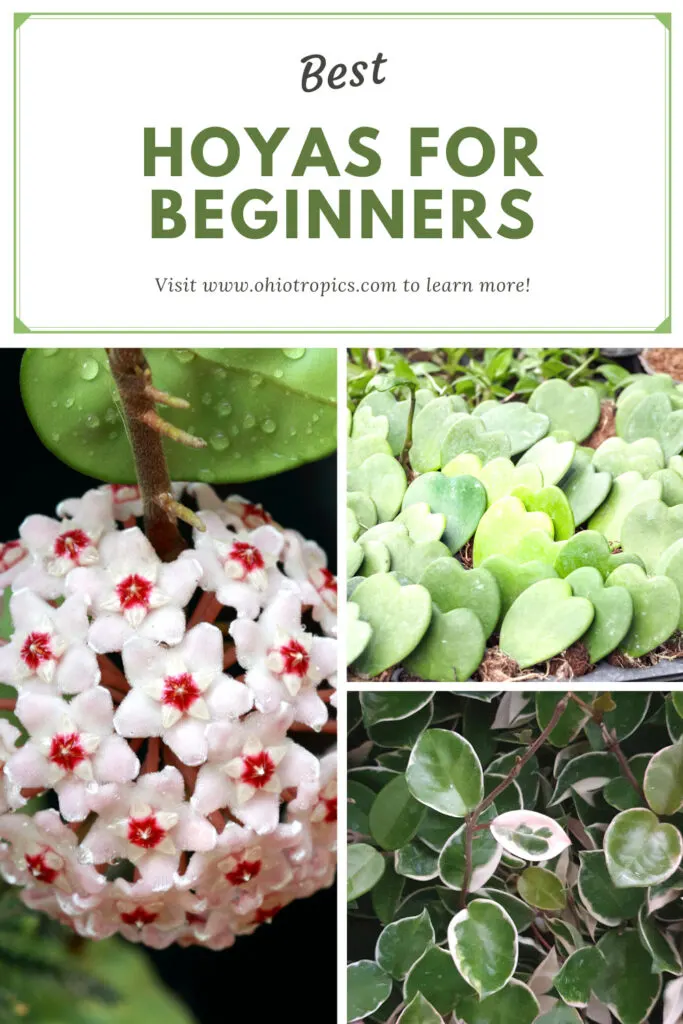
Table of Contents
BEST HOYAS FOR BEGINNERS
Hoyas belong to the Apocynaceae family of plants (commonly known as the milkweed family).
If you’ve ever seen the flowers on the common milkweed plant, you’ll find that they are strikingly similar to Hoya flowers.
A generic common name for Hoyas as a whole is “Wax Plant”.
Most Hoya species are native to tropical and subtropical Asia, as well as the west Pacific and many are epiphytic.
Here are 7 of the easiest Hoyas that you can grow at home (in no particular order based on ease of care).
1. Hoya carnosa
Hoyas are often passed down among generations as heirloom plants. Your heirloom Hoya that you probably received from your grandmother is most likely a Hoya carnosa.
You may have just the plain green species, or any one of a number of beautiful variegated cultivars of Hoya carnosa, including Krimson Queen, Krimson Princess, and many others.
Here is my Hoya carnosa, though I’m not certain which cultivar it is. I’ve owned this plant for almost 20 years at the time of writing this post.
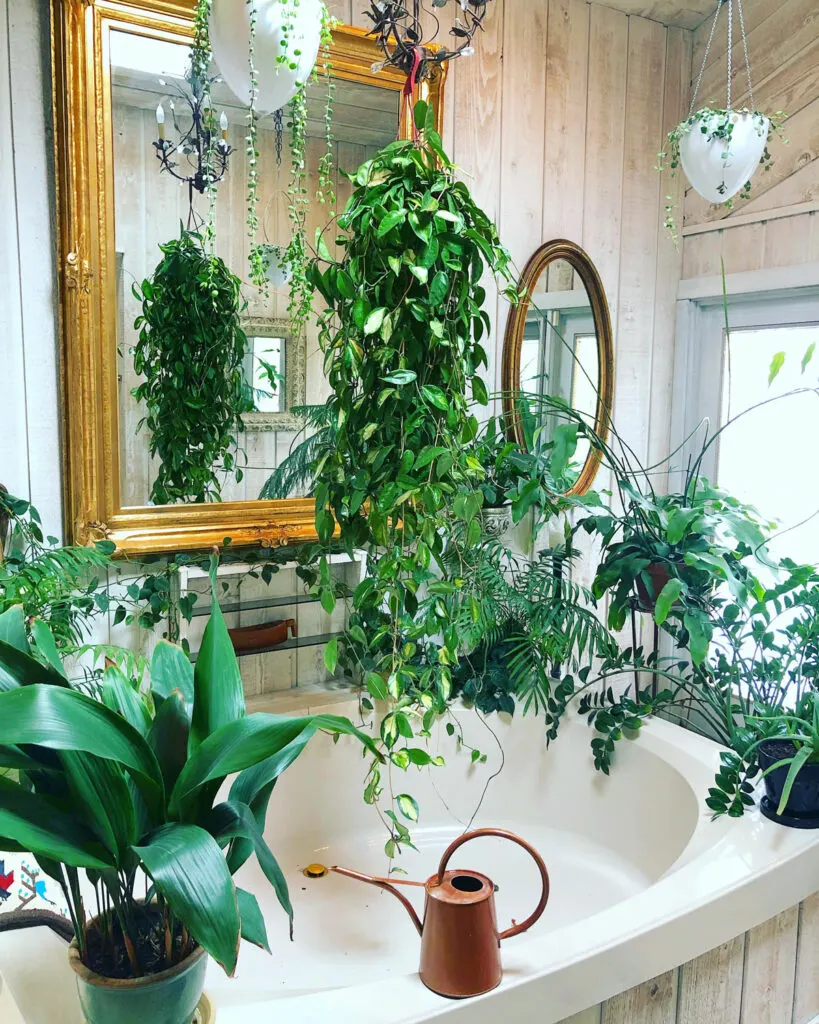
Be sure not to miss my Hoya carnosa growing guide.
2. Hoya compacta
This plant is actually a cultivar of Hoya carnosa, but it is sometimes just called Hoya compacta. The correct botanical name is Hoya carnosa ‘Compacta’.
Some common names for this Hoya include Hindu Rope Plant and Krinkle Kurl plant.
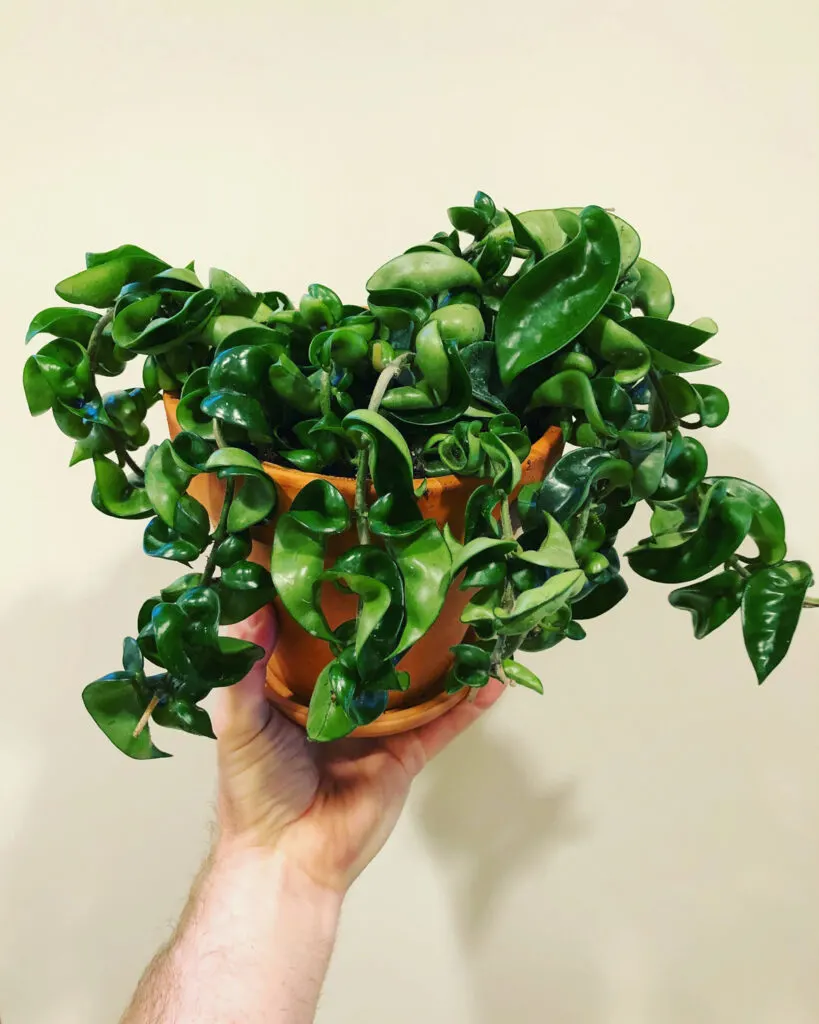
There are plain green plants as well as variegated plants. The variegated plant is Hoya carnosa ‘Compacta Variegata’.
Any variegated Hoya will naturally be slower growing than its solid green counterpart, but I find that even the plain green Hindu Rope Hoya like in my photo above is extremely slow growing.
So if your plant isn’t budging much even under good conditions, this is normal.
The tightly packed, crinkly leaves are beautiful, but be careful because all the crevices can be great hiding places for mealybugs!
Be sure not to miss my Hindu Rope Hoya growing guide.
3. Hoya curtisii
This is a miniature, trailing Hoya that has small, spade-shaped leaves that are mottled in grey. If you are looking for a Hoya that doesn’t take up as much space, this is a great option!
The plants will typically form a nice, dense mat of leaves over the surface of the soil before they start to spill over the edge of your pot.
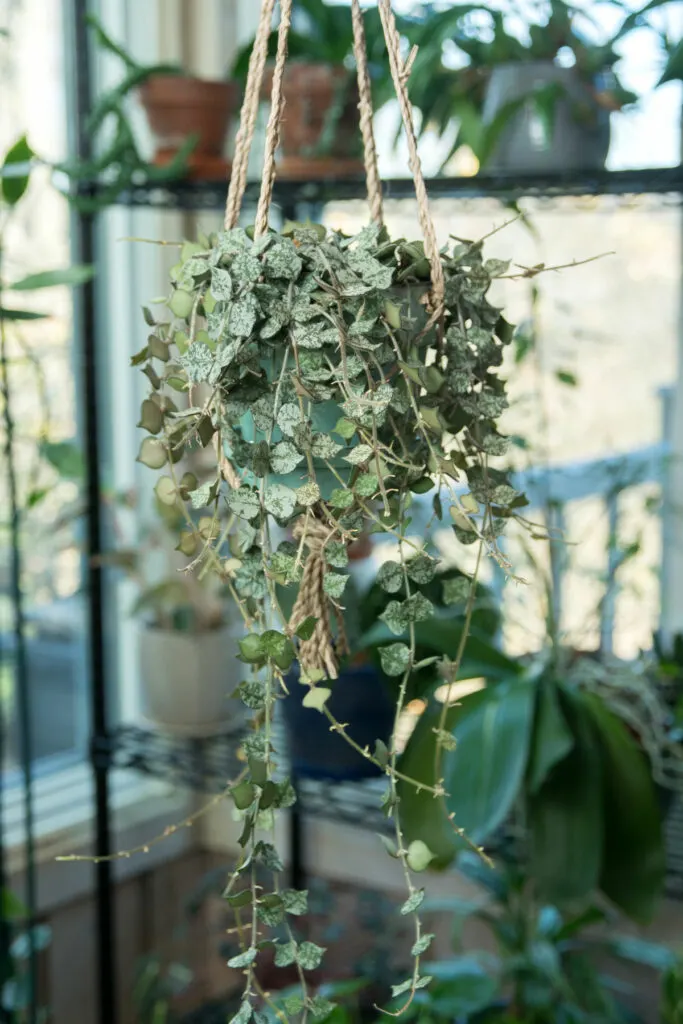
This species is a little harder to find than some other varieties, but it is equally easy to care for.
Be sure not to miss my Hoya curtisii care guide.
4. Hoya kerrii
It is easy to see why the Hoya kerrii is commonly known as the Sweetheart Hoya or Valentine’s Hoya. The heart-shaped leaves are a delight, and there are both plain green plants, as well as variegated plants.
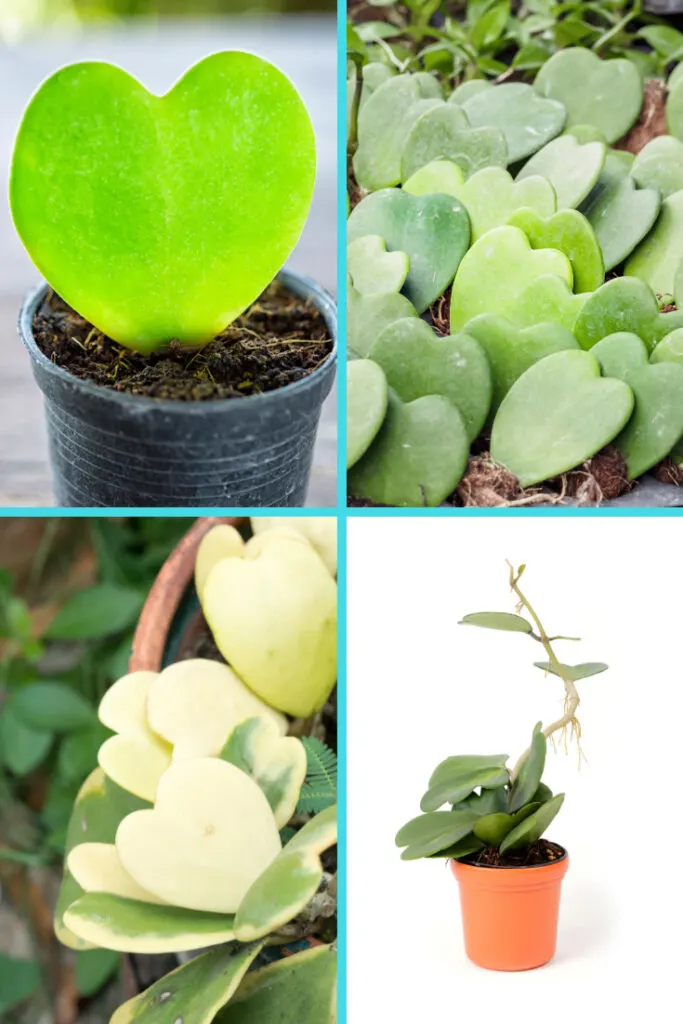
It’s a very slow grower, especially the variegated Hoya kerrii.
One thing to be careful of is if you see these plants sold as single leaves in a small pot. Unless the grower also included a node, your plant will remain as a single heart leaf.
Unfortunately, it’s hard to tell unless you inspect it below the soil surface. Sometimes people get lucky and they do end up growing an actual plant.
If you want more than just a single leaved plant, it will be worth it to purchase a plant that is already vining out.
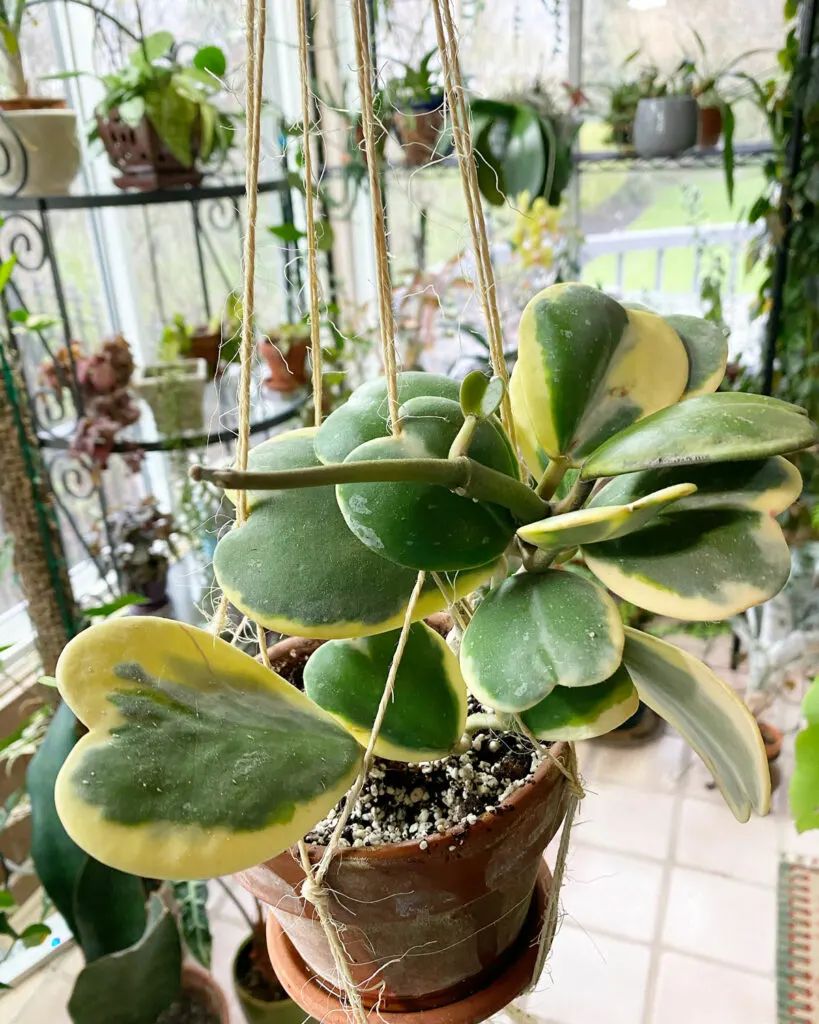
Be sure not to miss my Hoya kerrii care guide.
5. Hoya multiflora
Hoya multiflora, commonly known as the Shooting Star Hoya, is a bit different than many other Hoya species.
Most Hoya species have very thick, succulent leaves. The Shooting Star Hoya has thinner leaves, so it will not tolerate its potting mix drying out like Hoyas with thick leaves.
One positive feature of this plant though is that it is a very free bloomer, and will bloom even as a younger plant (unlike many other Hoyas). I’ve even had cuttings bloom while rooting in water!
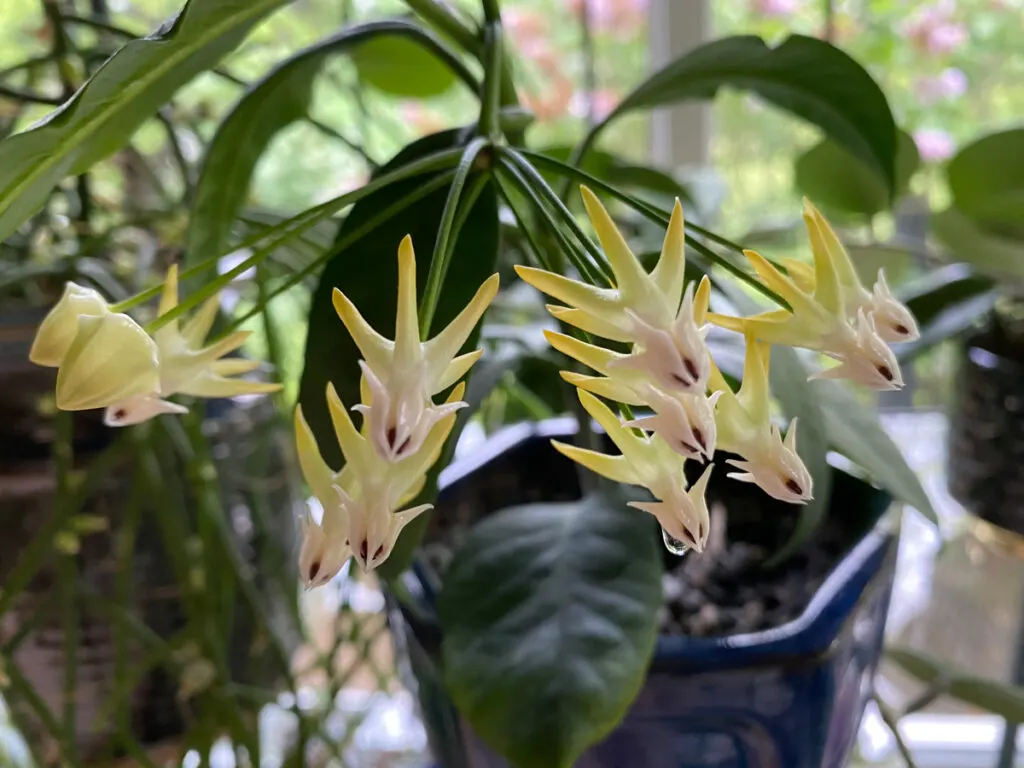
Just be careful to maintain nice, even growing conditions, including a fairly evenly moist potting mix, otherwise this plant can suffer from bud drop.
Unlike Hoyas that have thick, succulent leaves, I try not and let the potting mix of my Hoya multiflora dry out completely. I try and water when the top half inch or so has dried out.
Be sure not to miss my Hoya multiflora care guide.
6. Hoya obovata
One of my favorite Hoyas, as well as one of the easiest to care for, is Hoya obovata. The leaves are very succulent, so they can withstand periods of complete dryness with ease.
One benefit of this Hoya is that it will often bloom as a fairly young plant and it has a fairly rapid growth rate (for a Hoya!).
Leaves are often speckled with white or even pink flecks.
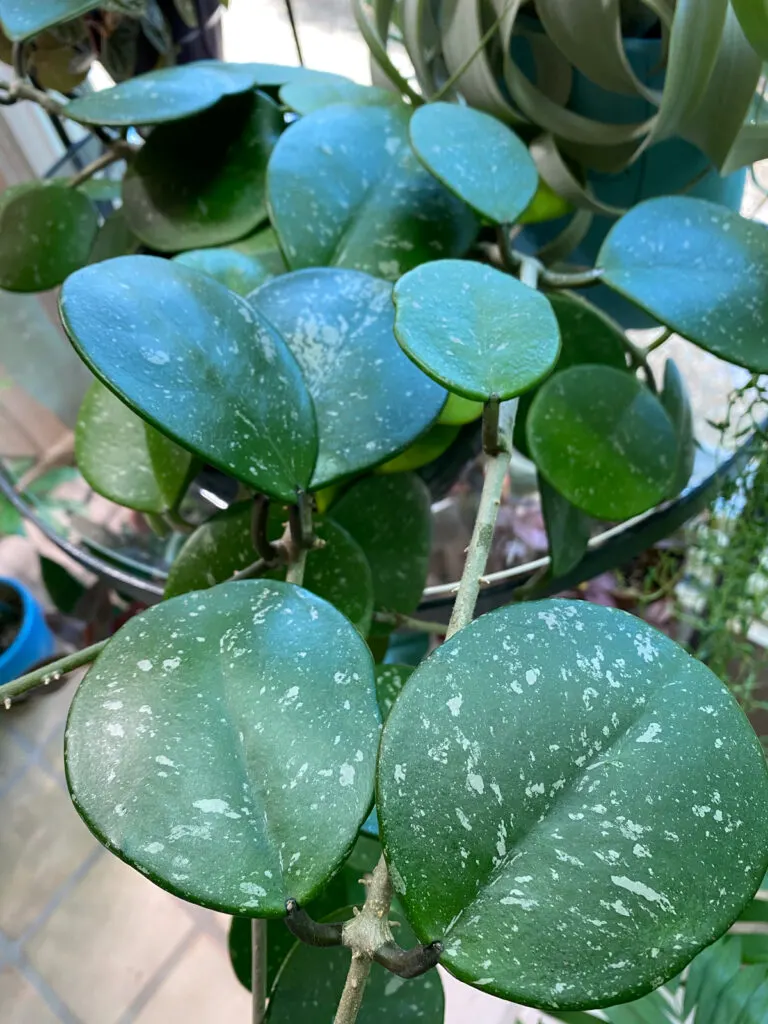
Here is a flower on my Hoya obovata. I grew the plant from cuttings, and it took about 2.5 years before it grew its first blooms.
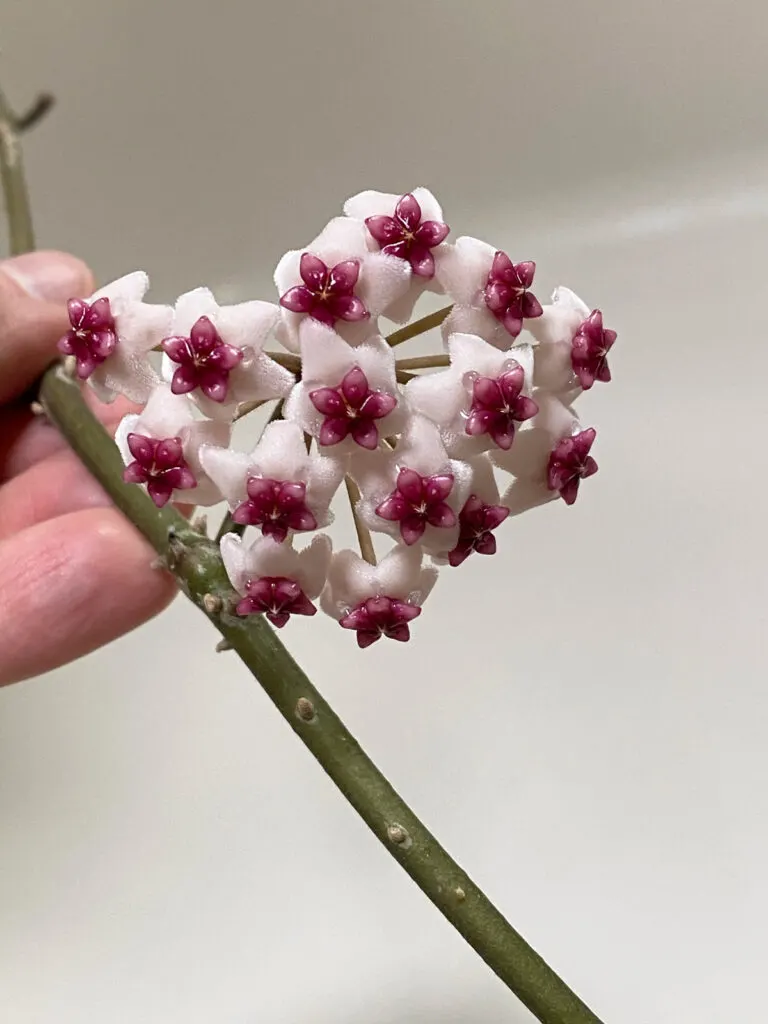
Be sure not to miss my Hoya obovata growing guide.
7. Hoya shepherdii
Commonly known as the String Bean Hoya, Hoya shepherdii has long, succulent leaves.
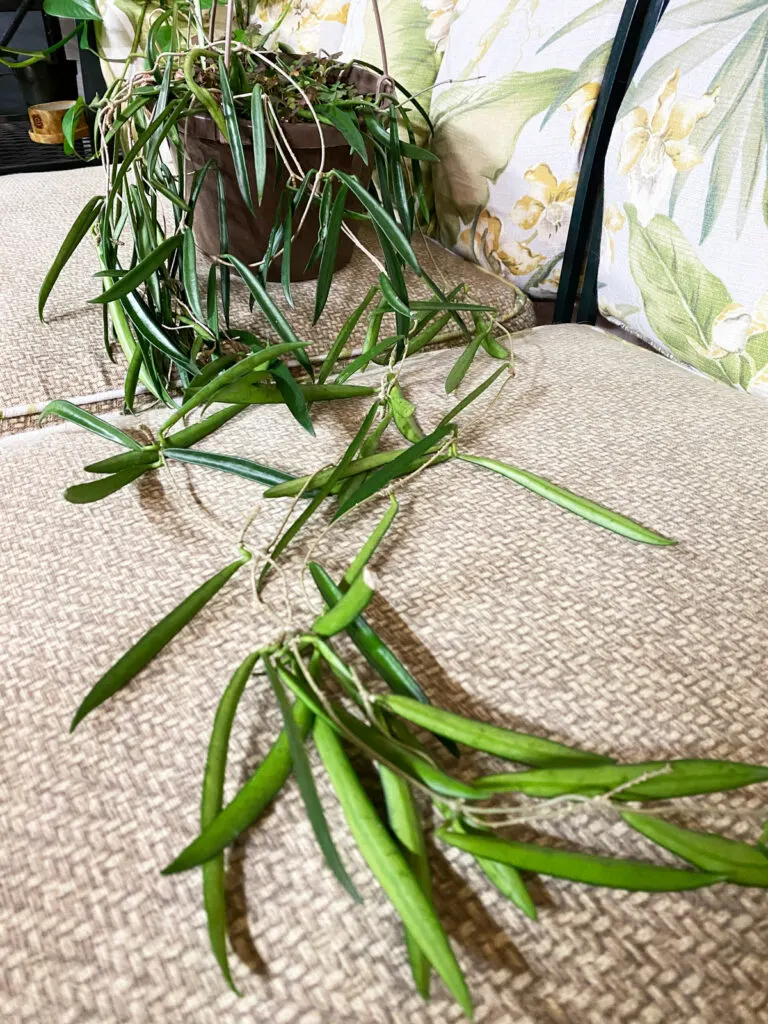
The flowers on this Hoya are not as large as those of any Hoya carnosa cultivar, but they are dainty and the plant itself is pretty free-blooming.
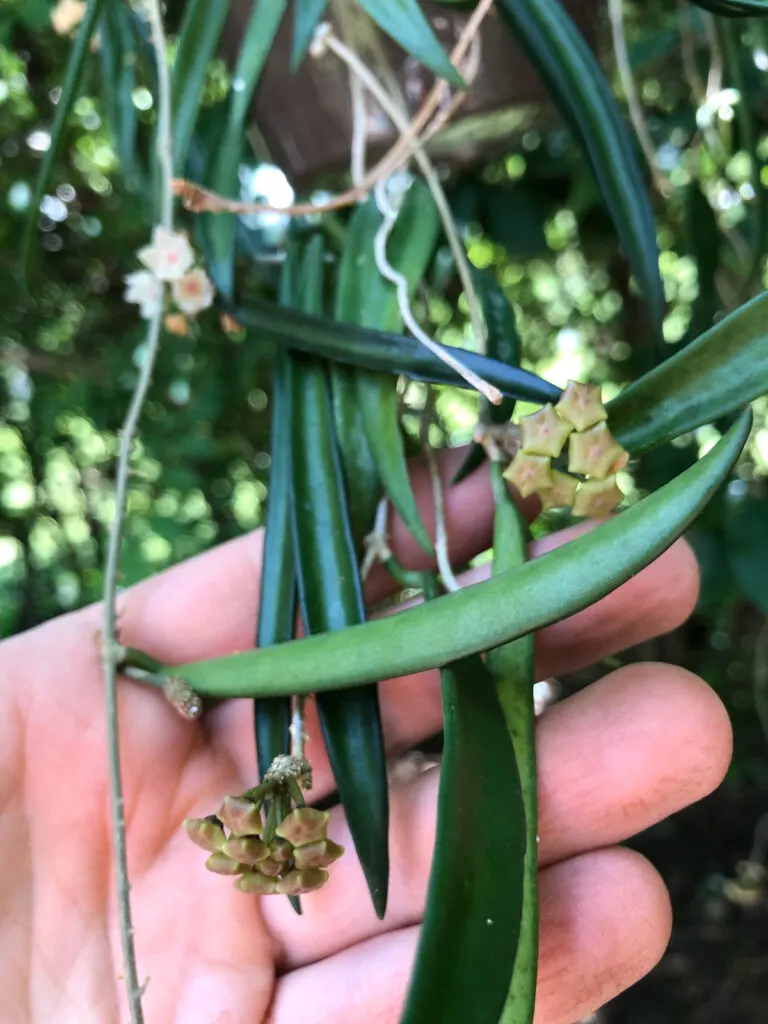
The vines on this species will hang straight down the sides of your pot, so it is a space saver. Sometimes Hoyas (like Hoya obovata) can be awkward when they start elongating their vines and will stick out in all sorts of directions. Hoya shepherdii doesn’t do that.
This is one of the easiest Hoyas to care for. Be sure not to miss my Hoya shepherdii care guide for more details.
8. Hoya wayetii
This is a fairly slow growing Hoya, and I purchased a plant that had much thicker and bigger leaves than had ever seen.
The grower attributed this to using an organic fertilizer called Sustane (4-6-4 formulation).
The leaves are thick and the more light the plant gets, the redder the edges of the leaves will become. The flowers are a gorgeous mauve color.
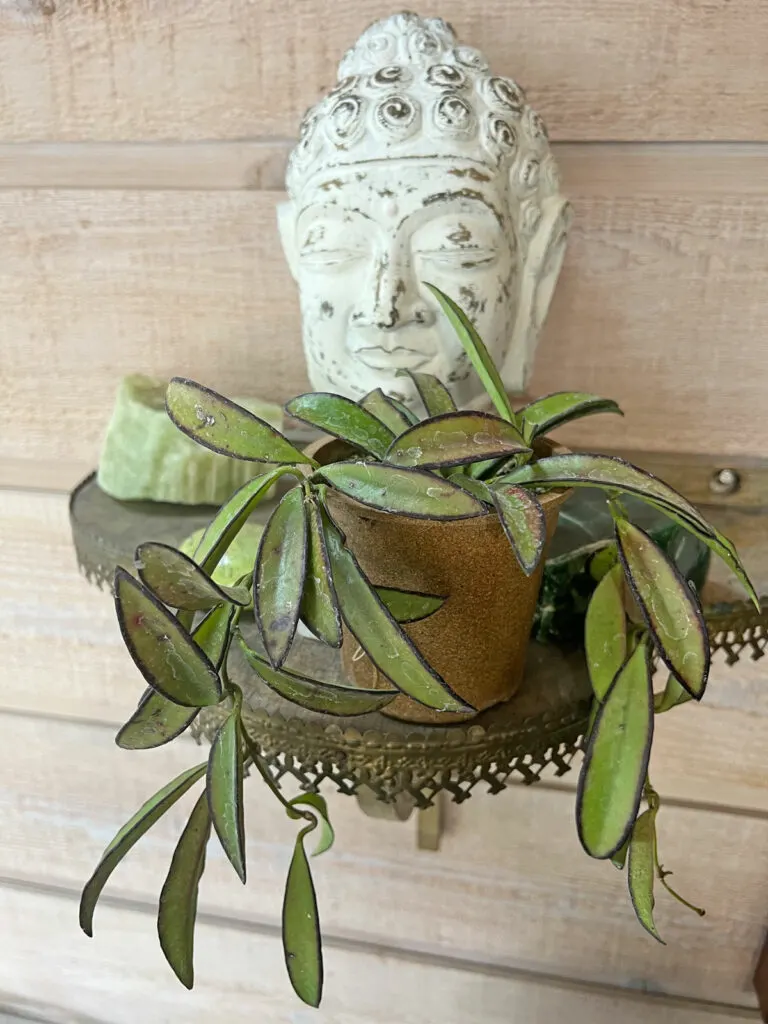
9. Hoya australis ‘Lisa’
Hoya australis ‘Lisa’ is a gorgeous variegated Hoya that grows fairly quickly and has beautifully fragrant flowers that reportedly smell like vanilla and chocolate. Mine has not bloomed yet and I’m eager to find out!
The new growth is a gorgeous reddish pink, which then fades.
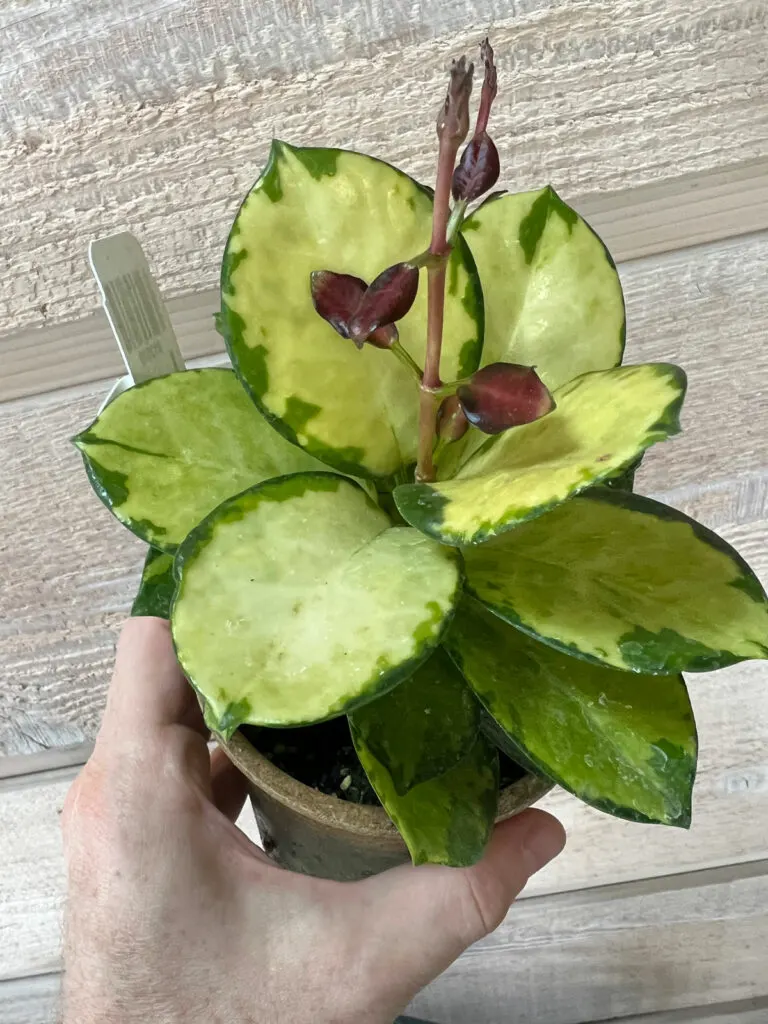
10. Hoya linearis
Hoya linearis is one of my favorite Hoyas. It grow very long (at the time of writing this post, my own plant is 8 feet long) and the leaves are different than most Hoyas.
The foliage is skinny and slightly hairy, versus the broader, thicker, and waxier leave of many other Hoya plants.
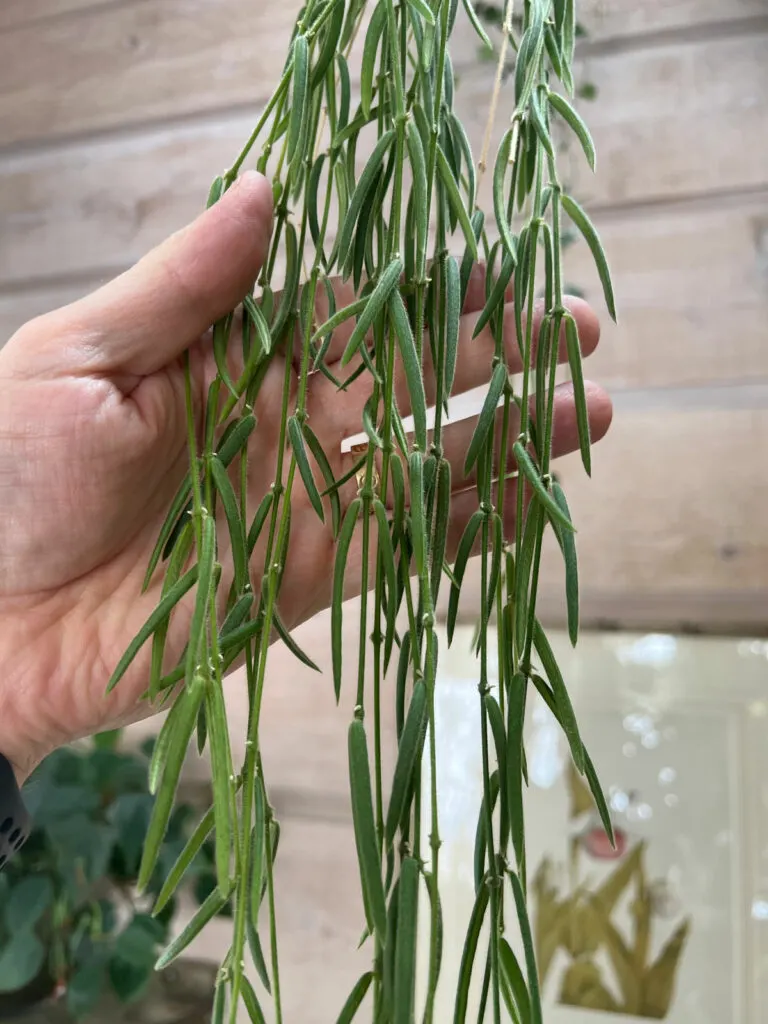
Be sure to also check out my blog post on how to propagate Hoya linearis.
If you want an amazing mix to use right out of the bag, check out the amazing Hoya soil blend from Oh Happy Plants. This is an amazing mix and you will get 10% off at checkout automatically if you use my link.
If you’re struggling with getting flowers, be sure not to miss my blog post on how to get Hoya plants to bloom.
What is your favorite, easy Hoya to grow?

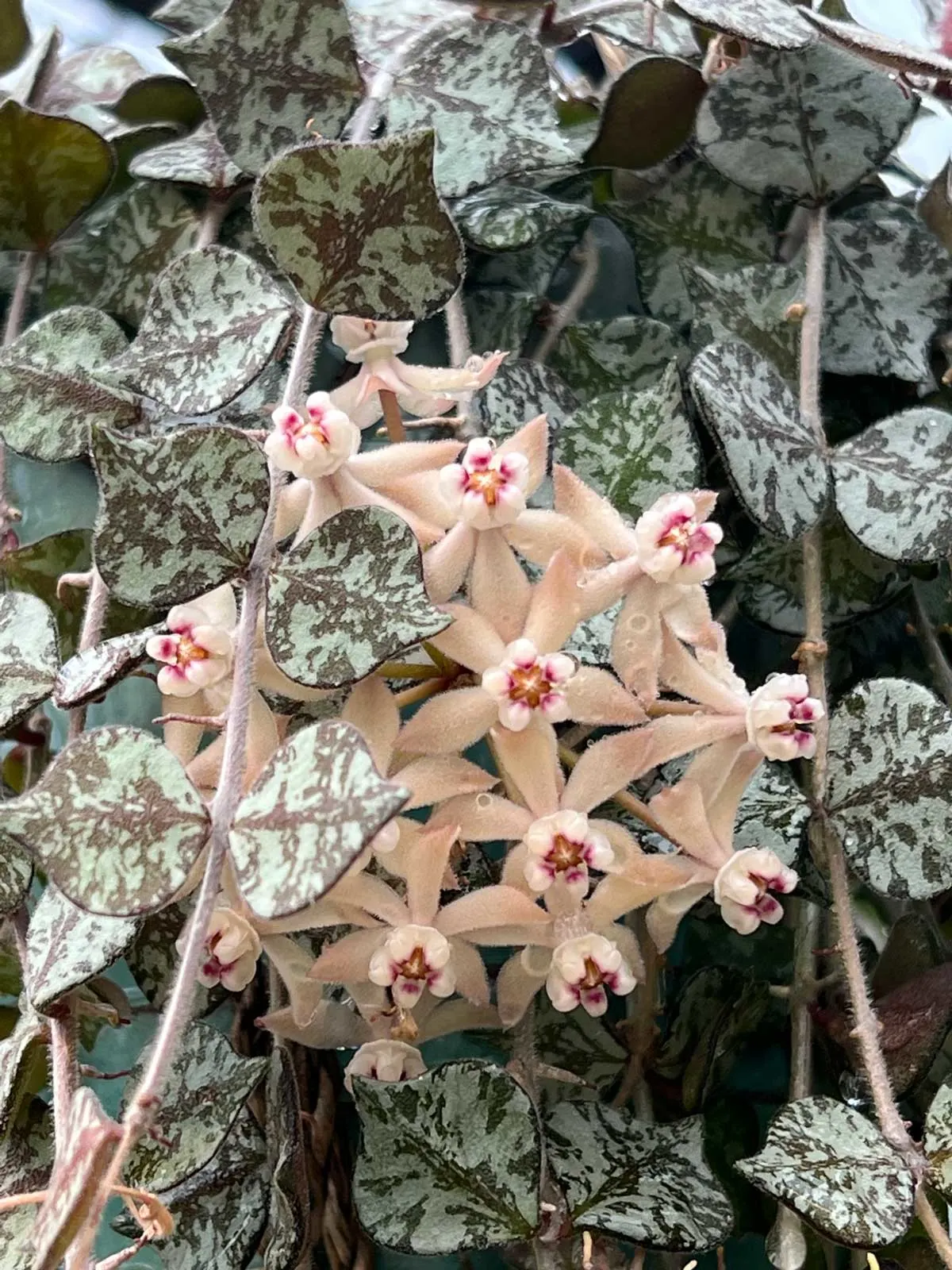
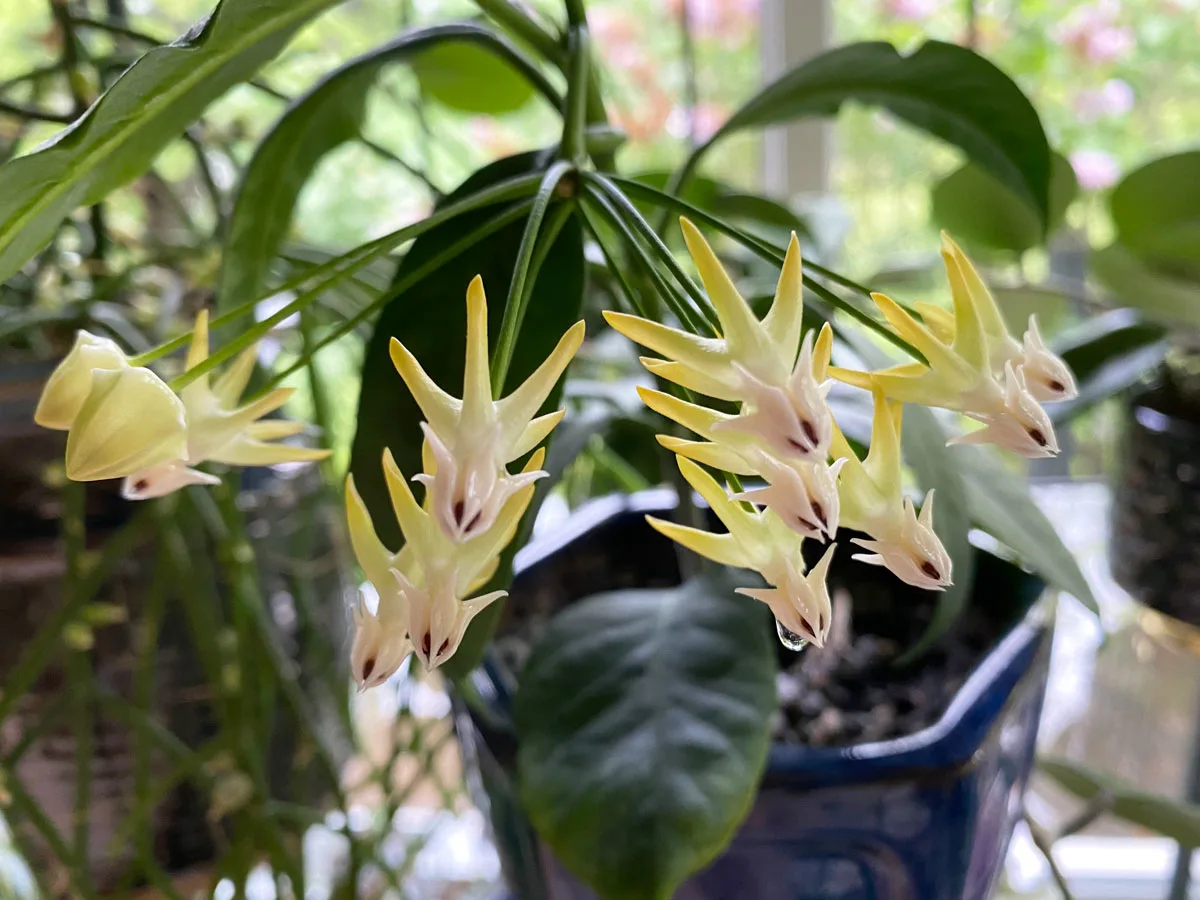

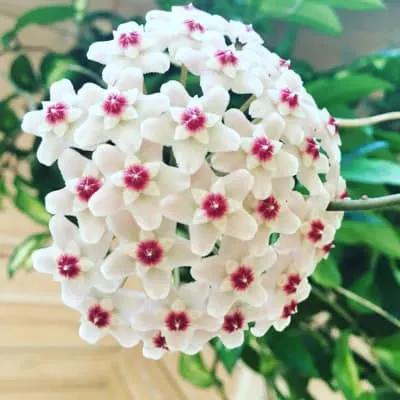
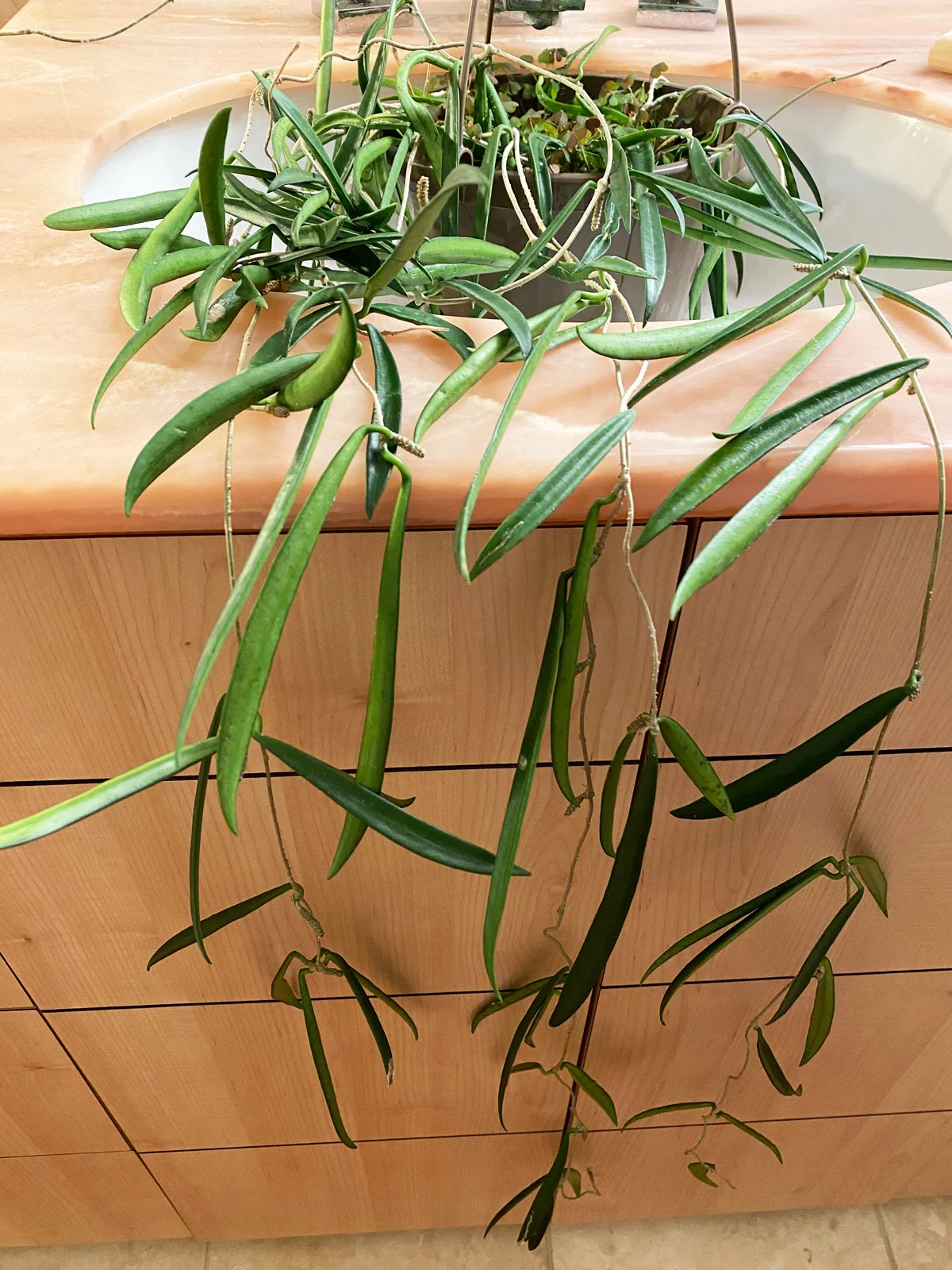
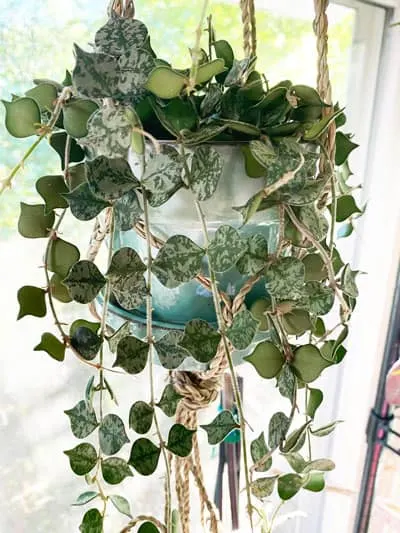
Jayanthi Srinivasan
Monday 21st of October 2024
Hi. Great resource on a lovely plant group. Can you share your pro tips on Hita Pubicalyx? I can’t get mine to grow much so wondering what I might be doing wrong. Thanks for all the wealth of knowledge.
Raffaele Di Lallo
Wednesday 23rd of October 2024
The care would be similar to most of Hoyas. Can you share how you're currently caring for it, including light conditions, watering, etc?
Trinity
Thursday 3rd of October 2024
Thank you for your articles and your plants are beautiful!!
Raffaele Di Lallo
Sunday 6th of October 2024
You're very welcome, and thanks so much!
Cherie
Saturday 15th of April 2023
For years I had a Hoya with small, oval, fuzzy gray green leaves. Small white blooms. It got sick and I finally gave up on it. Now that I’m getting back to Hoyas I want one again. I’ve been searching and the closest I’ve come is Hoya Serpens. I currently have 2 big healthy Hoyas, maybe a green australis and a Chelsea (guessing). But I have a tiny house. Can you help me in my search?
Raffaele
Monday 17th of April 2023
Hi Cherie! Do you have a photo of what you had?
Fátima
Saturday 6th of August 2022
I have been plant sitting for a neighbor that owns a Hoya Carnosa. Oh may it's now blooming and the baby pink flower are breathtaking. Would they grow indoor in a basement with artificial lights? You also mentioned them being inherited, does that means they're not available for sale?
Raffaele
Saturday 6th of August 2022
Yes, they would do just fine with grow lights! And they are commonly available for sale. I just meant that they are very long lived plants and therefore are often passed down to others.
Leonie Watson
Saturday 5th of March 2022
I have a Hoya Carnosa which has been growing in water for the past four years. It does flower occasionally but my question is should I pot it into soil. Thanking you in advance. PS I live in Queensland Australia.
Raffaele
Sunday 6th of March 2022
Hi Leonie! It might struggle after being in water for so long. Maybe leave that one in water...if you want to plant it in soil, you can take some cuttings and root them, and then plant them into soil.